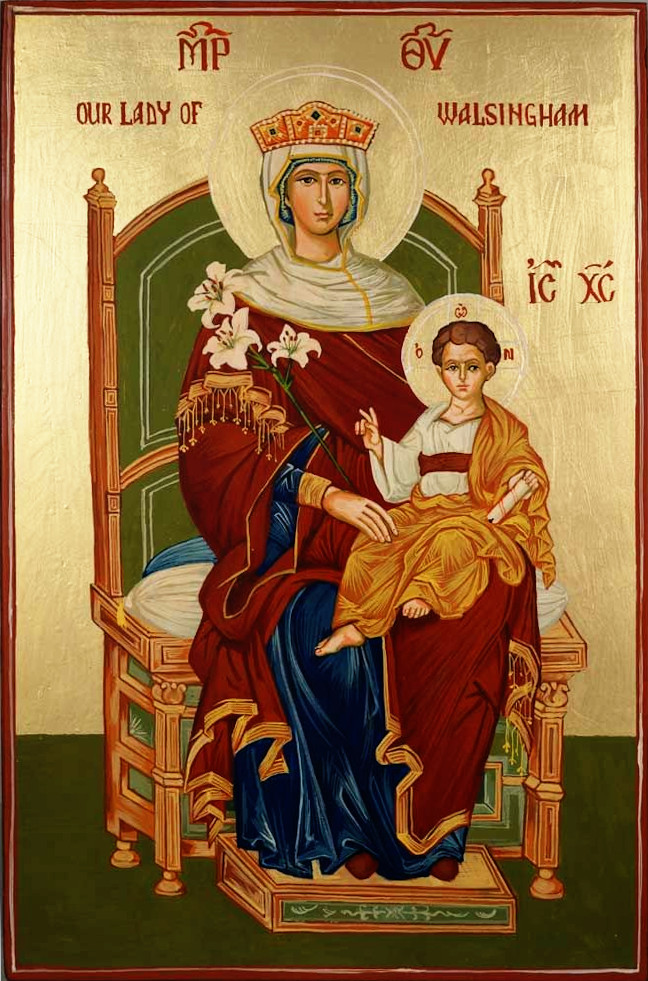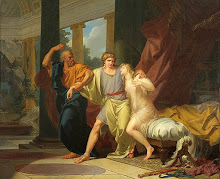The twelfth of December in the Orthodox Church is the feast-day of the præ-Schismatic Irish holy man, Saint Fionnán of Clonard, the ‘Teacher of the Irish Saints’. He is well worthy of this epithet, as he was both a scholar of formidable intelligence, and also a great father of the Celtic monastic tradition of the Welsh mode in Ireland.
Fionnán [also Fionan or Finnian] was born in the small village of Myshall on the slopes of Mount Leinster in the southeastern corner of Ireland. When his mother was pregnant, she beheld a holy vision in her sleep, of a bright spark of flame that flew into her mouth and down into her belly, before emerging the way it came. It flew off like a radiant bird, and went back and forth from the north of Ireland to the south, attracting after it a great flock of birds of like radiance, which gathered around and followed it no matter where it went. The birds then scattered throughout Ireland, Britain and the rest of Europe. When Fionnán’s mother told this vision to her husband, he thought rightly that it meant he would become a great teacher.
Saint Fionnán learned of several illustrious holy men, on both sides of the Irish sea. He was first taught by a disciple of Saint Padrig, Foirtchern mac Feidhlimidh of the Uí Néill, a kinsman of Saint Colum Cille (who would later be Fionnán’s own student). He studied some time on the Continent as well, at the monastic institution founded by Saint Martin of Tours. He also spent time in Wales, where he learned and came to treasure the austere, Desert-inspired asceticism transmitted by his teachers. These were: Saint Dewi Ddyfrwr, Saint Gildas the Historian and particularly Saint Cadog Ddoeth.
While in Wales, Saint Fionnán desired to make a pilgrimage to Rome. However, a messenger of God came and told him rather to return home, where he might become a teacher to the Irish saints, who stood in greater need of him. Still, Fionnán spent over two decades longer in Wales before returning to his native land. He made himself known to Coirpre mac Néill who was then king, and was given a grant of land at Mugna Sulcain to found a monastery, and another at Aghowle in Wicklow. In fact, he loved this latter monastery so much that he wanted to live out his days there, but the same angel warned him that he must go further.
Saint Fionnán then founded a monastery at Skellig Michael (recently of Star Wars fame), and spent some time there before returning to the main island and journeying to Kildare to spend time conversing on spiritual matters with Saint Brigid. He then made his way to Clonard in Meath, where he founded his main monastery and the one with which his name is most strongly associated.
Clonard began as a tiny wooden chapel and a cell made from wattle and daub in 520, of the sort commonly used throughout the British Isles by humble anchorites and hermits who sought to flee the world. Indeed, this choice was quite deliberate. Saint Fionnán wanted for himself every bit of the Desert severity he saw among the holy fathers of Wales, and about which he read in the works of Saint John Cassian. He slept on the earthen floor of his cell, never put anything under his head, and always wore an iron girdle around his waist. Such were the depths of his austerities that as an old man, his ribs showed through his clothing. The rule at this monastic centre was quite austere: the brethren slept little, ate little, prayed much and worked much. Yet from this humble beginning – a mere wooden kirk and wattle-and-daub cell – Clonard quickly became the largest monastic community of its kind in Ireland, and attracted many holy men and women. Among these were Saint Colum Cille, Saint Breandán of Clonfert and Saint Ciarán ‘the Younger’. Saint Columbán, the great missionary on the European continent, was influenced by the Penitentiary written by Saint Fionnán.
As his mother had foreseen, Clonard Abbey became a major centre for young men who desired to spread the word of Christ throughout Ireland and throughout the world. It was customary for each monk at Clonard to take with him a staff, a copy of the Gospels, and a relic or some other holy object – these would all be used in the foundation of new monasteries. Thus Clonard became a shining beacon of Christianity in Ireland – second in its God-given glory only to Armagh, the see of Saint Padrig. Saint Fionnán himself was renowned as an inspired commentator on the Holy Gospels, and it was such that he taught his students.
Saint Fionnán reposed in the Lord on the twelfth of December, 549. His relics remained at the monastery church in Clonard until 887, when it was sacked by Vikings. After the Viking attacks Clonard continued as a monastic centre, but with less influence than it had previously. Still, Saint Fionnán’s cultus flourished throughout Ireland; indeed, at Clonard one can find a church still dedicated to him. The ruins at Aghowle and Skellig Michael also stand witness to his memory. And nowadays in Belfast there is a Russian Orthodox mission church which is dedicated to Saint Fionnán. Remember, the Force will be with you, alw—Sorry. I mean, Holy father Fionnán, teacher and tutor of the saints of Ireland, pray unto Christ our God for us sinners!
As one who laboured with zeal in the vineyard of God,
By ascetic struggles and toils thou didst ascend
From glory to glory, O God-bearing saint.
Wherefore, joining chorus now with all the venerable on high,
Thou standest with boldness before the throne of the King of all,
Whom do thou beseech, O Fionnán most wise,
That He have mercy and save our souls.
















No comments:
Post a Comment